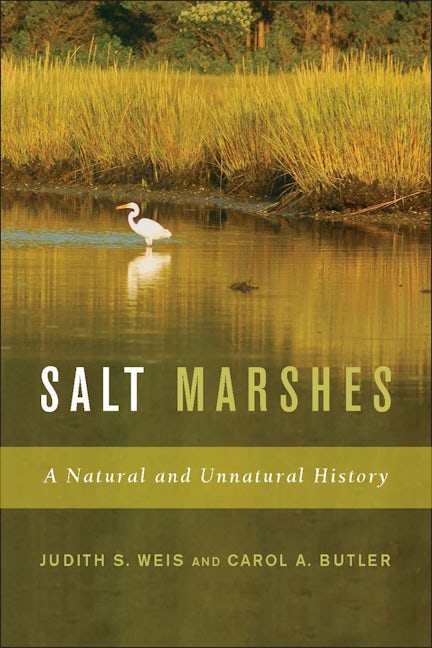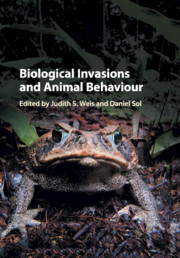Books

Salt Marshes
A Natural and Unnatural History
347 pages, 6 x 9
Paperback,July 16, 2009,$27.95
9780813545707
EPUB,July 16, 2009,$27.95
9780813582207
PDF,July 16, 2009,$27.95
9780813548517
Disciplines: Environment and Ecology, Nature
RELATED SUBJECTS
Tall green grass. Subtle melodies of songbirds. Sharp whines of muskrats. Rustles of water running through the grasses. And at low tide, a pungent reminder of the treasures hidden beneath the surface.All are vital signs of the great salt marshes’ natural resources.Now championed as critical habitats for plants, animals, and people because of the environmental service and protection they provide, these ecological wonders were once considered unproductive wastelands, home solely to mosquitoes and toxic waste, and mistreated for centuries by the human population. Exploring the fascinating biodiversity of these boggy wetlands, Salt Marshes offers readers a wealth of essential information about a variety of plants, fish, and animals, the importance of these habitats, consequences of human neglect and thoughtless development, and insight into how these wetlands recover.
Judith S. Weis and Carol A. Butler shed ample light on the human impact, including chapters on physical and biological alterations, pollution, and remediation and recovery programs. In addition to a national and global perspective, the authors place special emphasis on coastal wetlands in the Atlantic and Gulf regions, as well as the San Francisco Bay Area, calling attention to their historical and economic legacies.
Written in clear, easy-to-read language, Salt Marshes proves that the battles for preservation and conservation must continue, because threats to salt marshes ebb and flow like the water that runs through them.
Walking Sideways
The Remarkable World of Crabs
FORMAT
- HARDCOVER$29.95
- EBOOK$14.99
The world’s nearly 7,000 species of crabs are immediately recognizable by their claws, sideways movement, stalked eyes, and thick outer shells. These common crustaceans are found internationally, thriving in various habitats from the edge of the sea to the depths of the ocean, in fresh water or on land. Despite having the same basic body type as decapod crustaceans—true crabs have heavy exoskeletons and ten limbs with front pincer claws—crabs come in an enormous variety of shapes and sizes, from the near microscopic to the giant Japanese spider crab.
In Walking Sideways, Judith S. Weis provides an engaging and informative tour of the remarkable world of crabs, highlighting their unique biology and natural history. She introduces us to recently discovered crabs such as the Yeti crab found in deep sea vents, explains what scientists are learning about blue and hermit crabs commonly found at the shore, and gives us insight into the lifecycles of the king and Dungeness crabs typically seen only on dinner plates. Among the topics Weis covers are the evolution and classification of crabs, their habitats, unique adaptations to water and land, reproduction and development, behavior, ecology, and threats, including up-to-date research.
Crabs are of special interest to biologists for their communication behaviors, sexual dimorphism, and use of chemical stimuli and touch receptors, and Weis explains the importance of new scientific discoveries. In addition to the traditional ten-legged crabs, the book also treats those that appear eight-legged, including hermit crabs, king crabs, and sand crabs. Sidebars address topics of special interest, such as the relationship of lobsters to crabs and medical uses of compounds derived from horseshoe crabs (which aren’t really crabs).
While Weis emphasizes conservation and the threats that crabs face, she also addresses the use of crabs as food (detailing how crabs are caught and cooked) and their commercial value from fisheries and aquaculture. She highlights other interactions between crabs and people, including keeping hermit crabs as pets or studying marine species in the laboratory and field. Reminding us of characters such as The Little Mermaid‘s Sebastian and Sherman Lagoon’s Hawthorne, she also surveys the role of crabs in literature (for both children and adults), film, and television, as well in mythology and astrology. With illustrations that offer delightful visual evidence of crab diversity and their unique behaviors, Walking Sideways will appeal to anyone who has encountered these fascinating animals on the beach, at an aquarium, or in the kitchen.
- “As the subtitle of the book indicates, the world of crabs is indeed a remarkable one. Weis (biology, Rutgers-Newark) brings some of this to light in a readable account of these fascinating crustaceans. Chapters cover a wide range of topics, from anatomy, ecology, and behavior to fisheries and other interactions with humans.”Choice“Weis relates the often-fascinating story of crabs from their origins in the Jurassic period to the modern dinner table. Along the way, examples of the nearly 7,000 known species are Weis’s protagonists in discussions of habitats, anatomy and physiology, reproduction, behavior, ecology, and relationships with humans in mythology, literature, art, film, and the beach…. A surprising page-turner for anyone interested in natural history.”Library Journal
“In Walking Sideways, Judith S. Weis has thoroughly captured the diversity of lifestyle, form, and function of these ubiquitous animals. Found from the Arctic to the tropics, from the depths of hydrothermal vents to the branches of mangrove trees and the leaves of mountaintop bromeliads, crabs turn up in unexpected places. Those of us accustomed to encountering them in the rocky intertidal or the sandy beach marvel at the adaptations that make their varied lives possible. In chapters covering all the major topics of habitats, form and function, life cycle, behavior, ecology, fisheries, problems, and (very important) human interactions with crabs, including eating them, the author provides first-hand observations and stories from recent research. Her knowledge is nearly encyclopedic; despite my many years of research, observation, and reading about crabs, I learned a number of entirely new facts and met some species I had not heard about before. With plentiful illustrations and photographs of crabs in their habitats, this book will be a delight for the interested layperson, as well as the professional biologist in many fields.”
Description
Physiological, Developmental and Behavioral Effects of Marine Pollution
Authors: Weis, Judith S

Physiological, Developmental and Behavioral Effects of Marine Pollution
Authors: Weis, Judith S
-
Emphasizes organism level responses to marine pollutants including, in addition to traditional metal and organic pollutants, ocean acidification, hypoxia due to nutrient pollution, and contaminants of emerging concern
-
Gives attention to responses that have a logical connection to ecological effects
-
Synthesizing decades of work, but up-to-date, this book focuses on organism-level responses to pollutants by marine animals, mainly crustaceans, molluscs, and fishes. Emphasizing effects on physiological processes (feeding/digestion, respiration, osmoregulation), life-cycle (reproduction [including endocrine disruption], embryo development, larval development, developmental processes later in life (growth, regeneration, molting, calcification, cancer), and behaviour, the book also covers bioaccumulation and detoxification of contaminants, and the development of tolerance. The major pollutants covered are metals, organic compounds (oil, pesticides, industrial chemicals), nutrients and hypoxia, contaminants of emerging concern, and ocean acidification. Some attention is also devoted to marine debris and noise pollution.

- Publisher:Cambridge University Press
- Online publication date:October 2016
- Print publication year:2016
- Online ISBN:9781139939492
- DOI:https://doi.org/10.1017/CBO9781139939492
How does behaviour affect biological invasions? Can it explain why some animals are such successful invaders? With contributions from experts in the field, and covering a broad range of animals, this book examines the role of behaviour in biological invasions from the point of view of both invaders and native species. The chapters cover theoretical aspects, particularly relevant behaviours and well-documented case studies, showing that behaviour is critical to the success, and ecological and socio-economic impact, of invasive species. Its insights suggest methods to prevent and mitigate those impacts, and offer unique opportunities to understand the adaptive role of behaviour. Offering a comprehensive overview of current understanding on the subject, the book is intended for biological invasion researchers and behavioural ecologists, as well as ecologists and evolutionary biologists interested in how organisms deal with anthropogenic environmental changes such as climate change and habitat loss.
Reviews
‘[We] recommend this book to readers at the graduate level or above … We particularly recommend it to researchers who are looking for open avenues of research in invasive behavior to explore. … a diverse set of researchers will benefit from reading this timely, comprehensive overview of the behaviors that characterize invasive species.’
Angela Chuang and Jordan M. Bush Source: Biol Invasions
‘This is a valuable resource for behavioral ecology, conservation biology, and the science of invasions.’
J. Berger Source: Choice
‘This volume will be a good reference for graduate students or new researchers in invasion biology, as it points out main directions for unifying behavioral and ecological theory, and defines gaps in this growing field.’
Cinnamon Mittan Source: The Quarterly Review of Biology
‘The articles are pacy, informative, cross-referenced with current literature and highly relevant to local and international events … inevitably, a book of this quality carries a hefty price tag but to those working in behavioural and evolutionary ecology and biological invasions, I expect it will be worth it.’
Stephen Hoskins Source: The Biologist
‘… this book provides a thorough review of animal behaviour at all stages of biological invasion, providing the reader with case-studies, and offers exciting avenues for research in evolutionary biology and behavioural ecology. Furthermore, it provides applied insights valuable to wildlife management and conservation issues. A great read for students interested in the ecology and behaviour of invasive species.’
Kristin Thompson Source: International Society for Behavioral Ecology Newsletter

This book examines the critical issue of environmental pollutants produced by the textiles industry.
Comprised of contributions from environmental scientists and materials and textiles scientists, this edited volume addresses the environmental impact of microplastics, with a particular focus on microfibres released by textiles into marine and freshwater environments. The chapters in Part I offer environmental perspectives focusing on the measurement of microplastics in the environment, their ingestion by small plankton and larger filter feeders, the effects of consuming microplastics, and the role of microplastics as a vector for transferring toxic contaminants in food webs. Written by environmental and material scientists, the chapters in Part II present potential solutions to the problem of microplastics released from textiles, discussing parameters of influence, water treatment, degradation in aquatic environments, textile end-of-life management, textile manufacturing and laundry, and possible policy measures. This is a much needed volume which brings together in one place environmental research with technical solutions in order to provide a cohesive and practical approach to mitigating and preventing environmental pollution from the textiles industry going forward.
This book will be of great interest to students and scholars of environmental conservation and management, environmental pollution and environmental chemistry and toxicology, sustainability, as well as students and scholars of material and textiles science, textile engineering and sustainable manufacturing.
Reviews
“Our field should welcome this piece of writing with open arms. Although there are many writings about microplastics, microfibers are complex and include more than just plastic materials. I’m thrilled to see a comprehensive book, covering both science and solutions for microfibers specifically, led by a wonderful team of experts.” – Chelsea M. Rochman, Department of Ecology and Evolutionary Biology, University of Toronto, Canada
“Microplastics are poorly understood but pose a serious environmental and public health risk. This book shines a light on the problem. Unlike what policy makers and society did with climate change, it is imperative that we listen to the scientists on this vital issue. This book will help do that.” – Judith Enck, former EPA Regional Administrator and President of Beyond Plastics
“Microfibers – a form of microplastics – present significant challenges to scientists, policymakers, and the textile industry. This comprehensive book provides a summary of the state-of-the-science of the sources, pathways, monitoring techniques, and impacts of microfibers from leading scientists in this rapidly emerging field. Potential solutions to the hazards of microfibers and their added chemicals – from upstream measures such as policy and design innovations to downstream measures such as pollution pathway controls – are critically assessed through collaborations between textile professionals and environmental scientists alike.” – Scott Coffin, Research Scientist at the California State Water Resources Control Board, developing health-based regulations for microplastics
“This book’s investigation of microplastics is not only crucial for our understanding of the plastics problem for advocates and policymakers, it reveals the necessary shift textile manufacturers must make if we are to ever stop it.”- Stiv Wilson, CoDirector at Peak Plastic Foundation, creator The Story of Plastic film
“For a long time, textile microfibers have been simply considered as a sub-category of microplastics, thus preventing us from fully understanding the real extent of this global pollution issue. The publication of this book by an excellent team of authors provides us for the first time with all necessary tools to better comprehend this emerging pollutant, its sources, its impacts and the relevant solutions. Shifting the focus to fibres, and finally considering them as a very specific class of contaminants, represent a much-needed groundbreaking step in the right direction.” – Giuseppe Suaria, Research Scientist at CNR-ISMAR, Italy
“There are a number of different sustainability considerations across the entire life-cycle of textiles, including environmental pollution. This book highlights one important aspect of environmental pollution from textiles: microplastic fibers. Featuring prominent scientists in the field today, a wide array of problems and solutions are addressed in this collection which can serve as an important resource for those interested in reducing the negative environmental impacts of textiles from a number of different viewpoints.” – Denise Mitrano, Professor, Department of Environmental Systems Science, ETH Zürich, Switzerland
“Microfibers are a small but ubiquitous pollutant just under our radar that escapes readily into the atmosphere, posing a serious threat to our environment and health of all organisms great and small. Similar to asbestos, studies have found that ingested and inhaled microplastics and microfibers get into cells and tissues and can cause harm. This book gives us a deeper understanding of problems posed by these tiny textile fragments, and shares practical solutions, from material redesign to particle capture. More importantly, it confirms without a doubt the need to classify problematic plastics as the hazardous waste that it is.” – Jackie Nuñez, Founder, The Last Plastic Straw, and Advocacy & Engagement Manager, Plastic Pollution Coalition